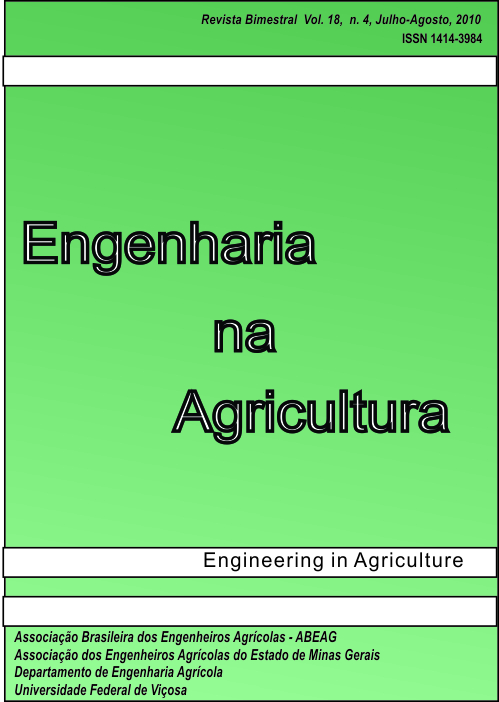EVALUATION OF HYDROLOGIC BEHAVIOR OF THE ENTRE RIBEIROS RIVER BASIN, AN AFFLUENT OF PARACATU RIVER, IN CLIMATIC CHANGE SCENARIO, WITH THE USE OF THE STELLA SOFTWARE
DOI:
https://doi.org/10.13083/reveng.v18i4.50Keywords:
Mudanças climáticas, comportamento hidrológico, modelagem, software STELLA.Abstract
Occurrence of extreme changes in the meteorological and climatologic phenomenon has become a fact. Despite adoption of emergency measures, some problems have intensified e.g. increase in the concentration of gases of heating effect; decrease of ozone layer; decline of agricultural land, increasing contamination of aquatic ecosystems and progressive decline of the resources of potable water. One of the aggravating factors for this situation is substitution of the native vegetation, a reality in the Entre Ribeiros river basin, increasing irrigation is replacing “Cerrado” (-47.65%), by cultivation (+198.9%). This has reduced rain water infiltration into the soil, thus reducing the average and the minimum flow. This study, simulated the possible effect of climate change, considering 1 ºC increase of temperature and 6.9% of the precipitation during the period 1995-2060, through modeling based on the origin of “Dynamic of the Systems” with the use of the software STELLA. The results showed a tendency of decrease of 18.70% in the “Direct Precipitation” and significant alterations in the evapotranspirometric rate in pasture grass (+33.34%), Cultivation (+23.77%), “Cerrado” (+8.54%) and Forest (-9.49%).Downloads
Downloads
Published
How to Cite
Issue
Section
License
Authors who publish with this journal agree to the following terms:
The author(s) authorize(s) the publication of the text in the journal;
The author(s) ensure(s) that the contribution is original and unpublished and that it is not in the process of evaluation by another journal;
The journal is not responsible for the views, ideas and concepts presented in articles, and these are the sole responsibility of the author(s);
The publishers reserve the right to make textual adjustments and adapt texts to meet with publication standards.
From submission, the author is fully conceding the paper's patrimonial rights to the publication, but retaining the owner of its moral rights (authorship and paper's identification) according to Creative Commons Attribution-Noncommercial.








 Licensed by
Licensed by 